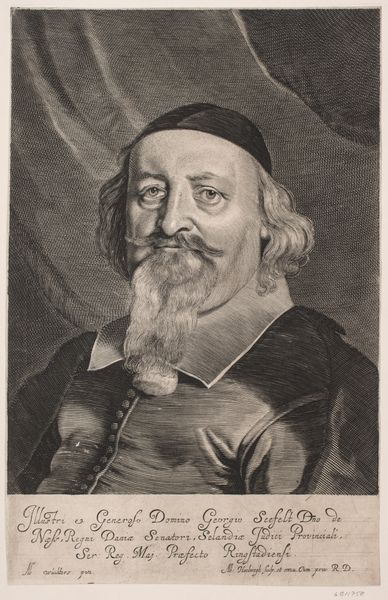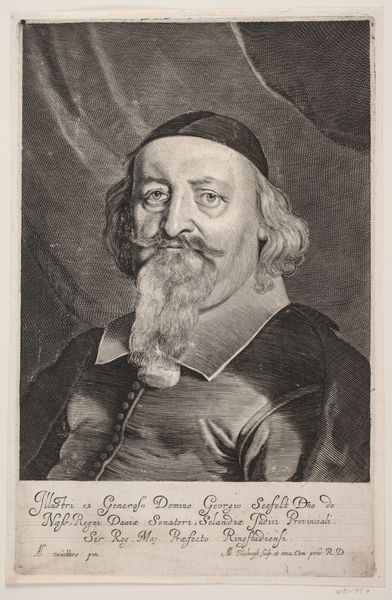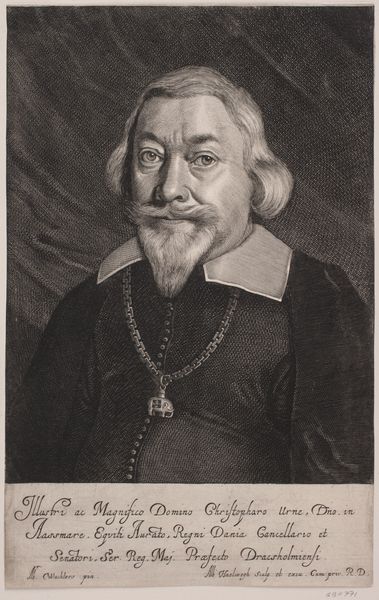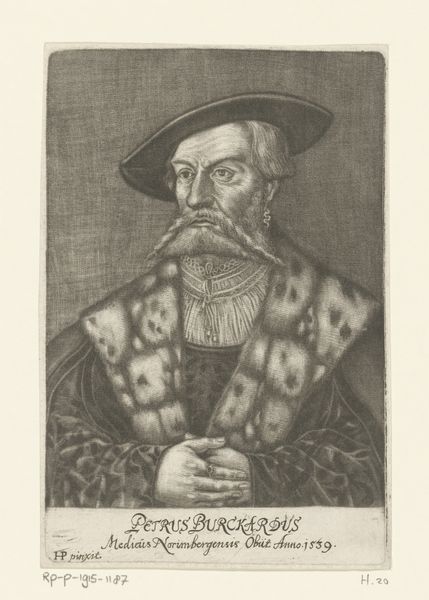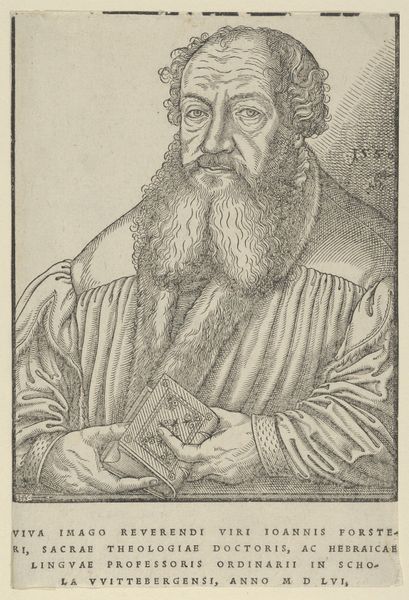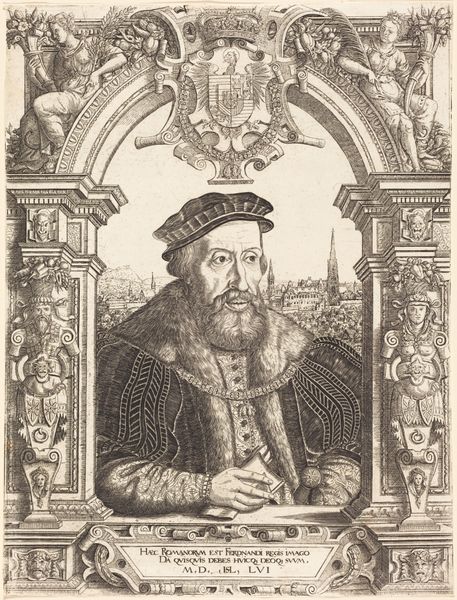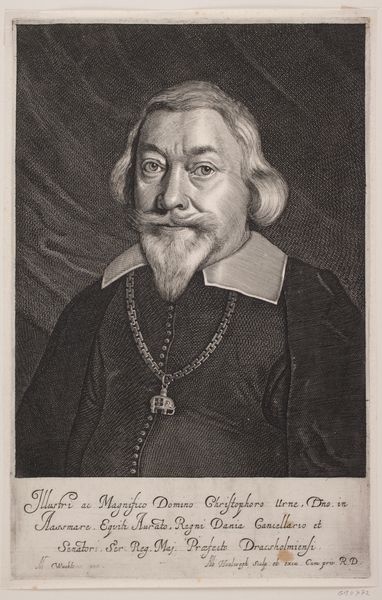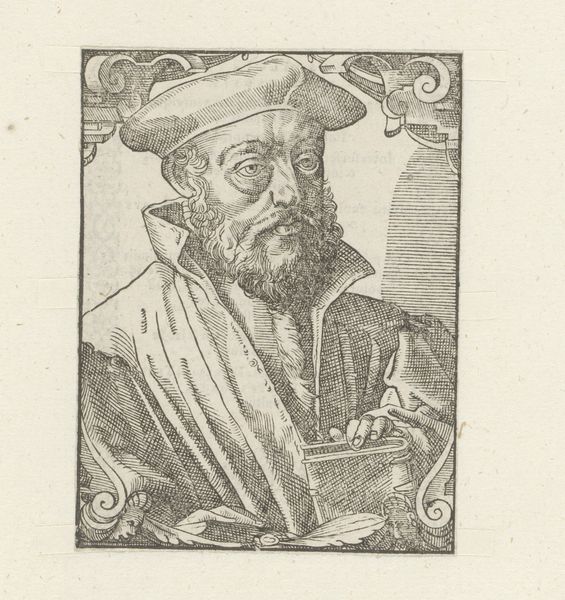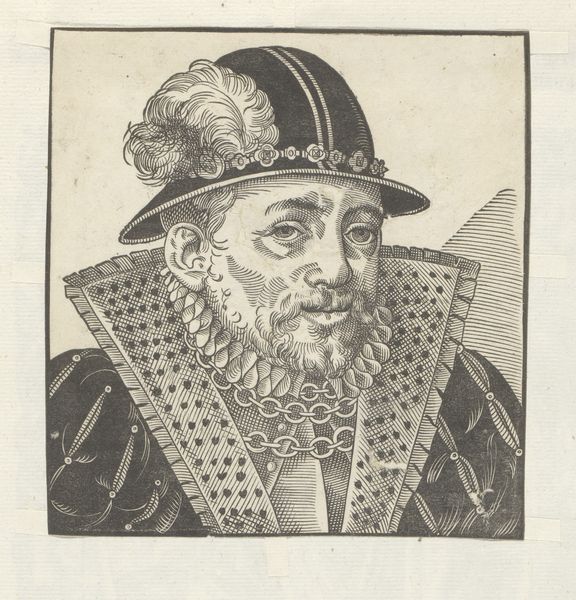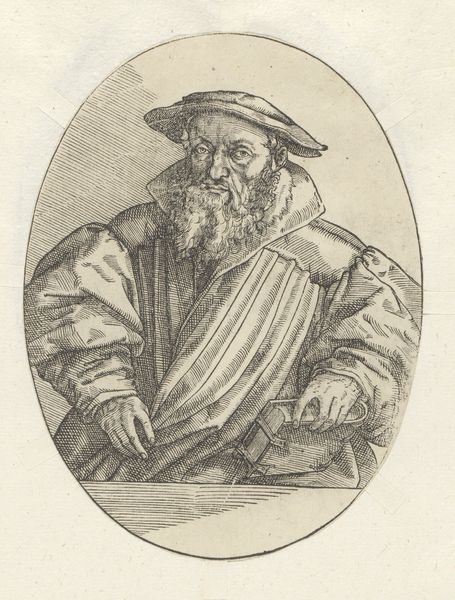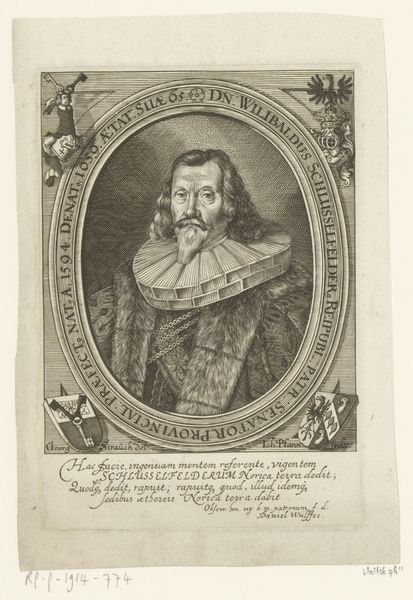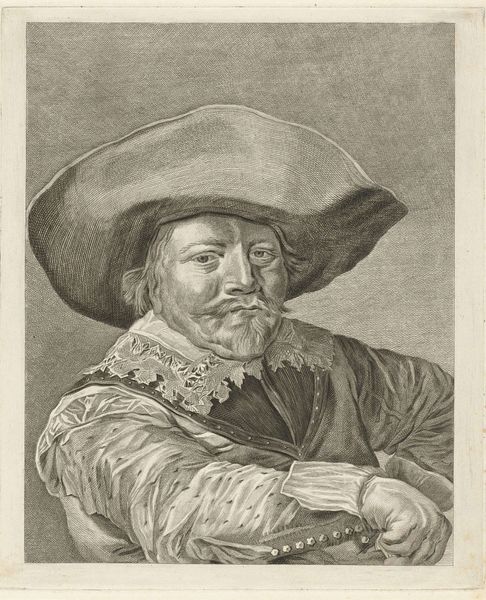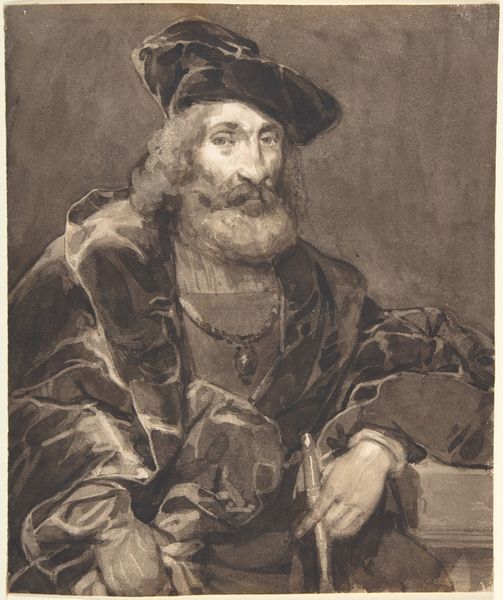
print, engraving
#
portrait
#
baroque
# print
#
portrait drawing
#
history-painting
#
engraving
#
portrait art
Dimensions: 294 mm (height) x 197 mm (width) (bladmaal)
Curator: Before us is a striking engraved portrait of Jørgen Seefeld, crafted between 1655 and 1659 by Albert Haelwegh. The artwork, currently housed at the SMK - Statens Museum for Kunst, offers a glimpse into the Danish Baroque era. Editor: My initial reaction? The sheer detail achieved through engraving is impressive. There’s a somber, almost grave, mood radiating from the subject. Look at the texture captured, from his beard to the fabric of his clothes. Curator: Precisely! The use of engraving as a medium allows for an exploration of power and representation in 17th-century Denmark. Consider the role of portraiture in constructing identity and reinforcing social hierarchies during this period. Seefeld, as a senator, is deliberately presented in a manner befitting his status, his gaze projecting authority. We should ask how the availability of such prints reinforced social power dynamics of the time. Editor: It also reveals a meticulous, labor-intensive process. Each line is deliberate, each shade carefully considered. It compels us to think about Haelwegh's skill and time investment, and, conversely, how prints allowed for broader dissemination and consumption of images beyond unique, expensive paintings. Curator: Absolutely. It also prompts us to delve into Seefeld's political and social context. What were the key debates, the social anxieties of his time? What role did he play within the Danish court, and how does this portrait either uphold or subvert those established narratives? It's an intersection of power, artistry, and political landscape. Editor: Right, it’s also vital to unpack the conditions of artistic production here: Haelwegh wasn’t simply creating art but participating in a network of patronage and influence. Consider the accessibility of prints at that time; what socioeconomic status was needed to acquire it and how does that detail shape our contemporary understanding? Curator: This image offers a tangible connection to the past, allowing us to examine the societal forces at play in 17th-century Denmark through the lens of representation, power and individual agency. Editor: And for me, thinking about the process highlights how material choices impacted not just aesthetic qualities but social circulation—a critical reminder of the links between artistic production and economic life.
Comments
No comments
Be the first to comment and join the conversation on the ultimate creative platform.
